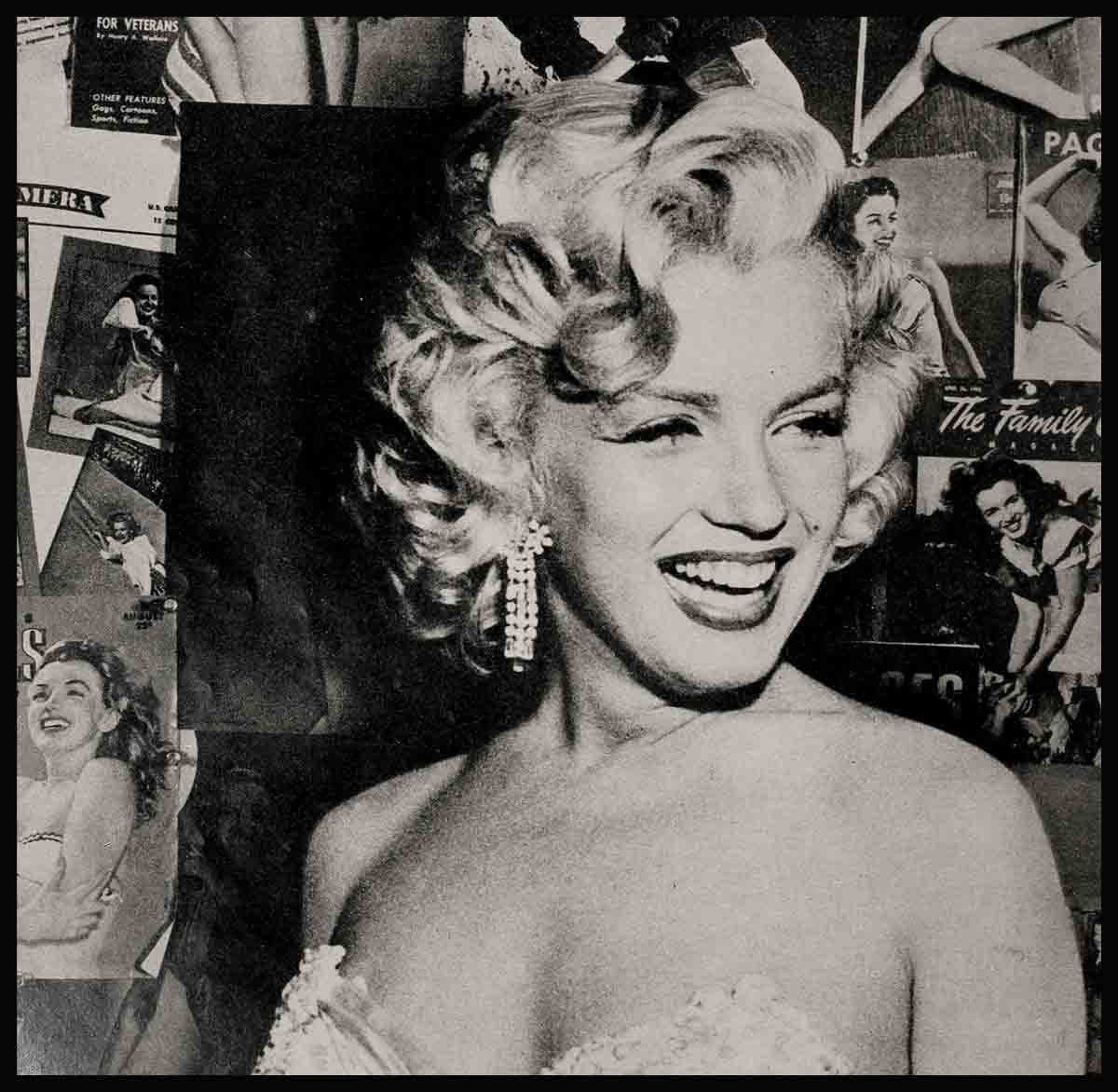
The Secrets Of Marilyn’s Life As A Model
For fifteen years I’ve been running the Blue Book Models School in Hollywood. I’ve watched our girls make the big jump to stardom after working with us, but the graduate I’m most proud of is Marilyn Monroe. Not only because she is today the most successful and well-known of all my students, but because she started with the least.
When Marilyn came to me back in August, 1945, she had no money, no background, one sharkskin dress, a man-tailored, teal-blue suit and a bathing suit.
Her name was Norma Jean Dougherty and she was married to a merchant seaman. She was cute-looking, but she knew nothing about carriage, posture, walking, sitting or posing.
A photographer I had worked with, Potter Hueth, brought Marilyn around to the school in the Ambassador Hotel.
He explained that he had inherited her from another photographer, David Conover, who had shot Marilyn’s first portrait while she was working at an aircraft plant out in Burbank. Before going into the Army Conover had brought Marilyn to Hueth’s studio on Pico Boulevard and Fairfax. He had said, “Here’s a cute girl who photographs very well. Maybe you can get some work for her.”
Potter looked at Marilyn and said, “If you’re willing to work on speculation, I’ll take some shots of you.”
Marilyn smiled and asked, “What do you mean by speculation?” And Potter explained that he couldn’t afford to pay her in advance for posing. “If any magazines buy your pictures,” he explained, “I’ll pay you a percentage.”
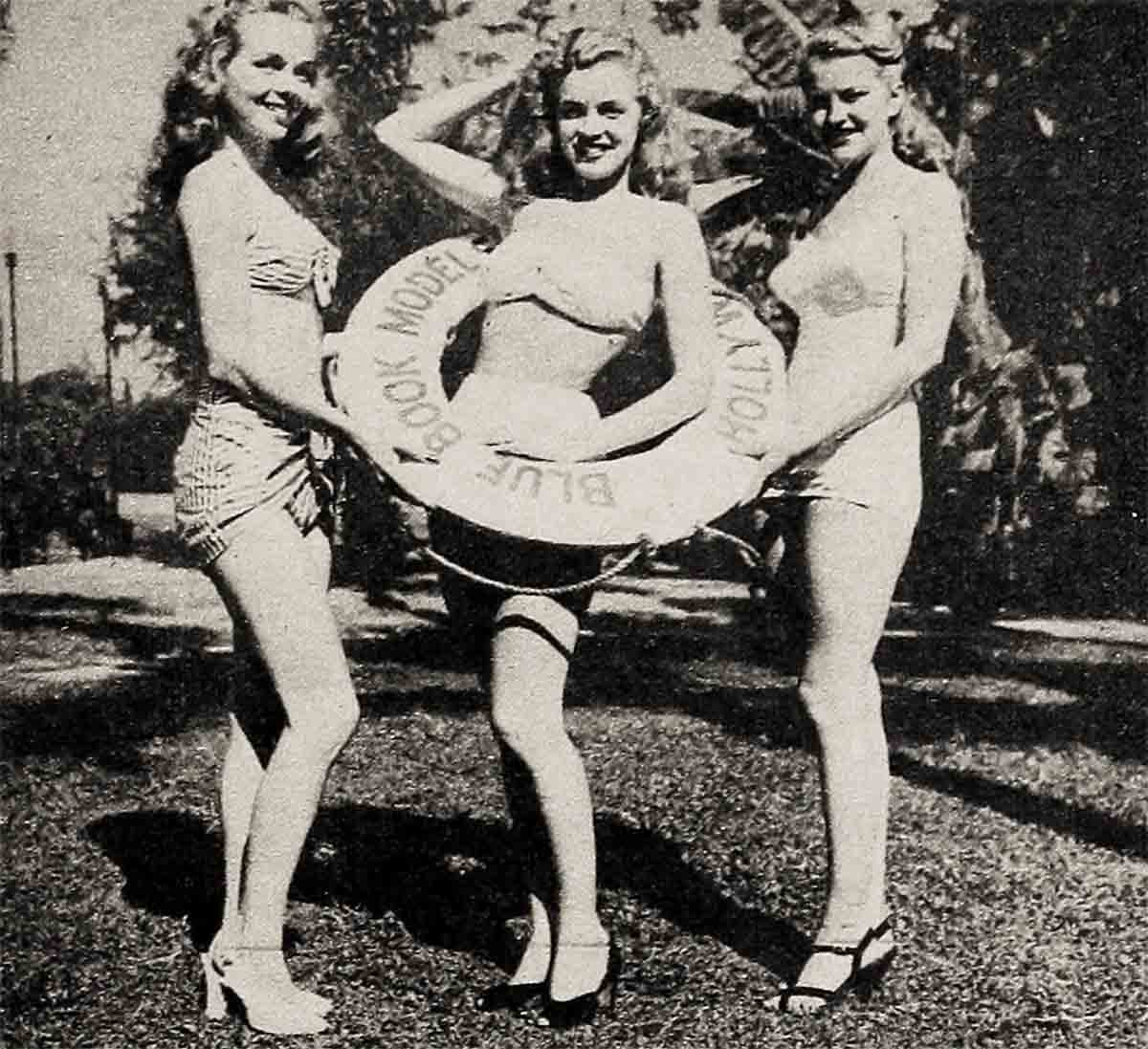
Marilyn was quite enthusiastic about this and Potter posed her with a Dalmatian dog and then dressed her in a farmerette’s outfit and photographed her sitting on a bale of straw. He worked with another photographer, Bob Farr. He brought both Marilyn and the color photos to my office and asked if I might be interested in helping her.
When Marilyn first walked into my office and saw the bulletin boards plastered with magazine covers, she grew breathless and excited.
“Those are the prettiest girls I’ve ever seen,” she said. “Do you think I could ever, ever, get my picture on a magazine cover?”
“Of course,” I said. “You’re a natural.”
Actually, Marilyn was So naive, so sweet, and so eager to succeed that my heart went out to her at once.
I told her that tuition for a three-month instruction period in the school cost $100. I saw the look of disappointment well up in Marilyn’s eyes.
“But you don’t have to worry about that.” I quickly added. “You can work out the tuition.”
Then I began to interview the girl and jot down her measurements. In 1945, according to my records, she was a size twelve with a thirty-six-inch bust, twenty-four-inch waist, and thirty-five-inch hips. Her age I estimated at seventeen or eighteen.
Her hair is listed as “California blonde” which means that it is dark in the winter and light in the summer. I recall that it curled very close to her head, and was quite unmanageable. I knew at once that it would have to be bleached and worked on.
I asked Marilyn about her background and she confessed (again shyly), “I sing a little. That’s all.” She had no ambition at the time to become an actress, unless, of course, it was a secret desire.
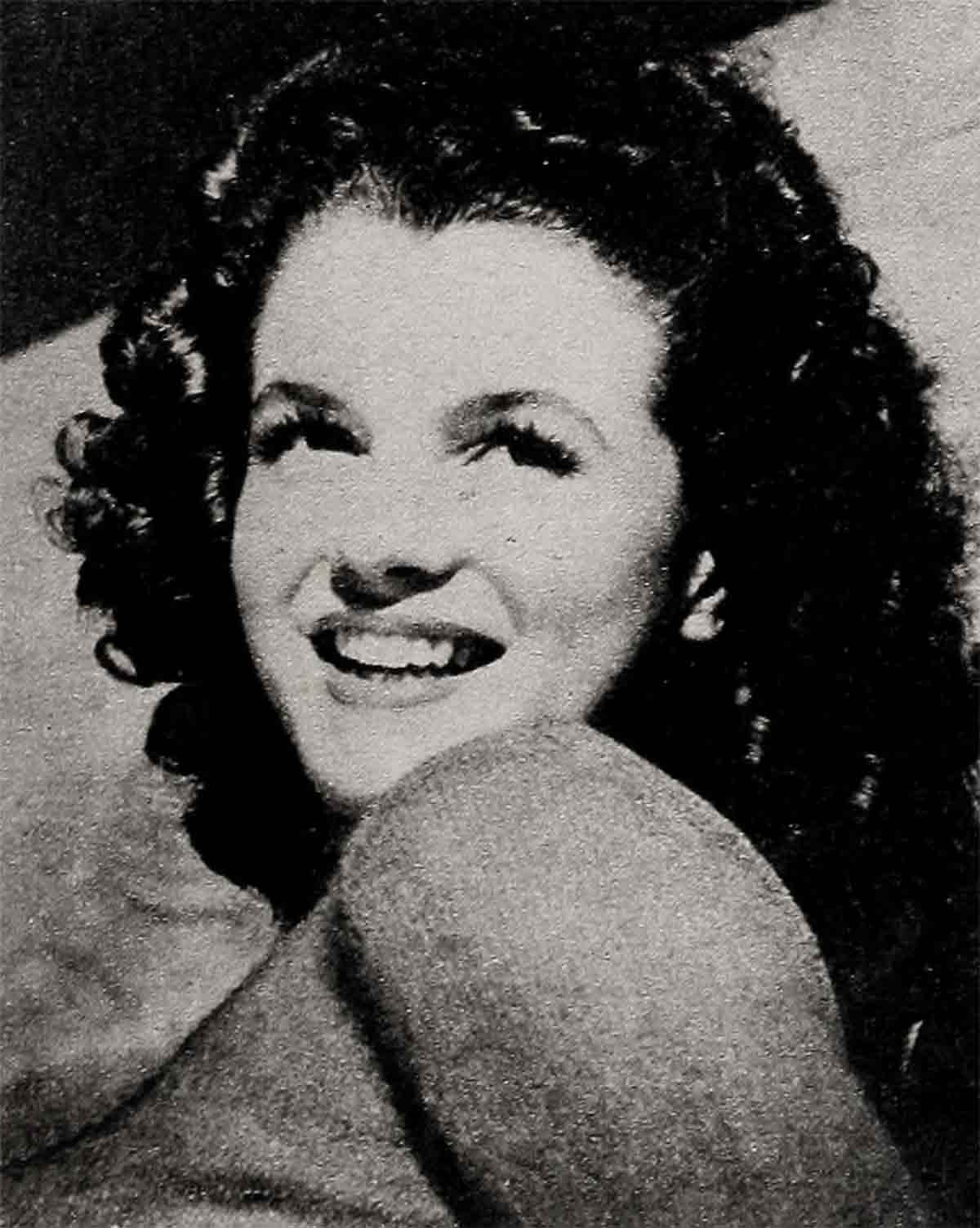
She did have a pleasant personality, what we call an All-American girl kind of personality—cute, wholesome and respectable. There was no sultry sexiness about her except that her clothes were a little too tight across the chest. That sex buildup was to come much later, although I did realize immediately that Marilyn would never do as a fashion model.
Most fashion models are tall, sophisticated-looking and slim-chested. Marilyn was none of these.
The first day Marilyn attended classes, I knew she would do all right, because she aroused the good nature in people. She would walk in and in her cute, high voice say, “Hello, everybody.” And everybody would answer, “Hello.” There was something arresting and sincere about the girl’s personality.
When I introduced her to a photographer, she would look him straight in the eye and cling to his every word. She was sincerely eager. She made everyone she talked to feel as if he were the only guy in the world. She did this naturally without design or premeditation. It’s still her way. She’s not obsessed with herself.
A week after Marilyn enrolled in my school, a steel company called and asked for a hostess at the industrial show, a girl to be pleasant and hand out programs. The salary was ten dollars a day for nine days.
I gave the job to Marilyn. The report came back that she was excellent. When the child was paid off, you know what she did? She gave me the whole ninety dollars.
“This,” she said, “will take care of most of my tuition.”
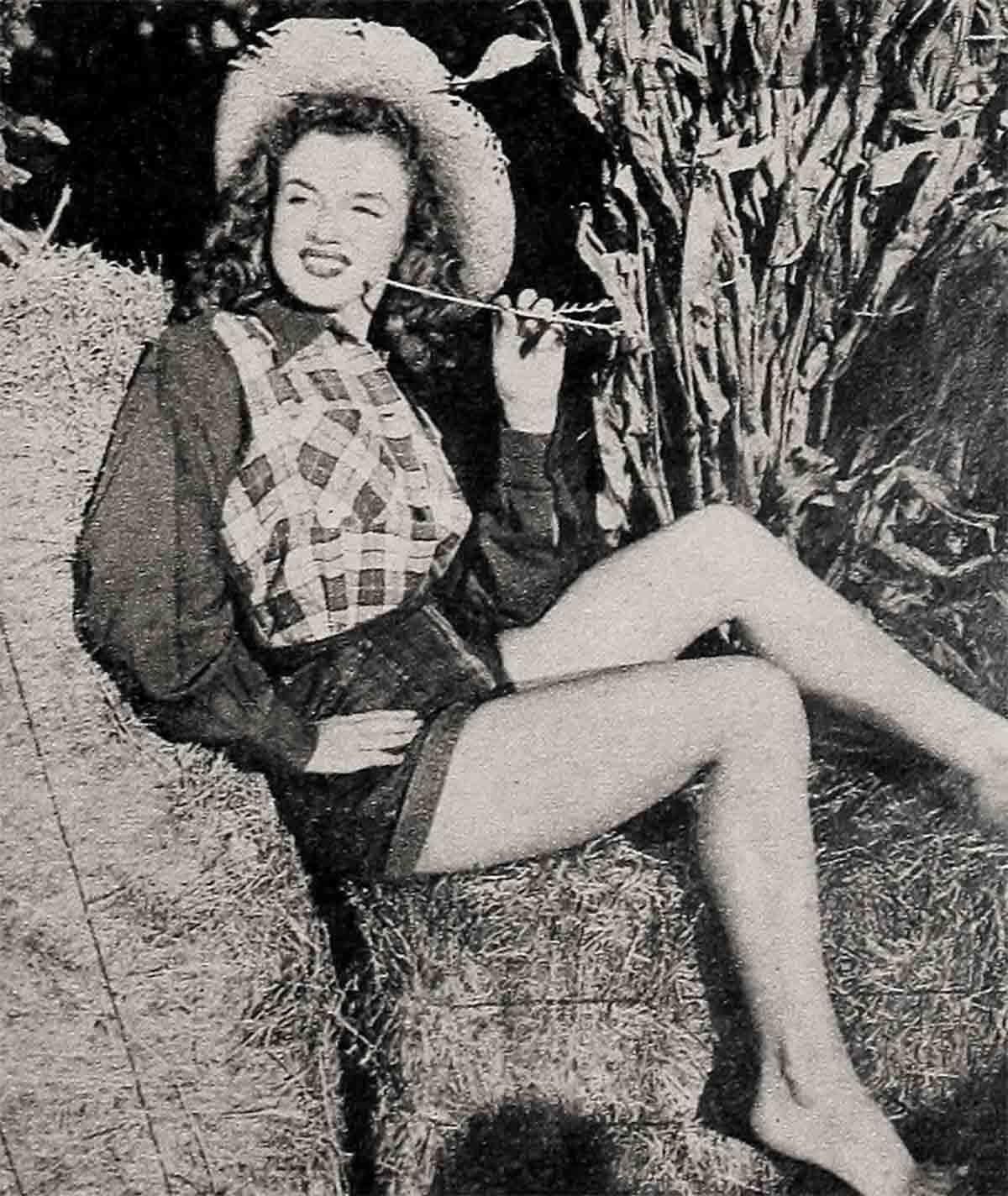
I knew at once that Marilyn was a fair and honest and very fine girl, and I decided to get her as much work as I possibly could. I sent her out to audition for some Montgomery Ward catalogue work. She didn’t make the grade, but she wasn’t discouraged.
“Maybe I’ll do better next time.” That’s what she said, and those words really typified her spirit. It was upbeat all the way.
On several occasions I gleaned that all wasn’t going too well between her and her husband. He had come home from an overseas trip and discovered that Marilyn wasn’t the child he’d married. They probably had arguments, but Marilyn never discussed any of her personal problems.
As a youngster she’d been kicked around so much, sent from one orphanage to another, one foster home to another, that I guess she developed self-sufficiency. I’ve always admired her for that.
Most girls who attend my classes come with their mothers. They have someone behind them, someone to drive them to different jobs, a father to protect and oversee things. Marilyn had no one. Only herself.
I guess it was because of this that I took a strong interest in the girl. I concentrated on her. She gobbled up every bit of instruction. She was wonderful on hand positions, body positions, and simply great when it came to make-up. But I just couldn’t do anything with her fashion modeling, probably because of her cute figure and her walk.
When Marilyn walks her knees lock. She’s double-jointed in the knees. So she can’t relax and that is why her hips seem to sway when she stalks into a room.
Even after 20th Century-Fox signed her and gave her further instruction, the child couldn’t fashion model. I saw her when the studio loaned her out to model in a benefit fashion show at the Ambassador, and she still couldn’t make it. This was in 1948.
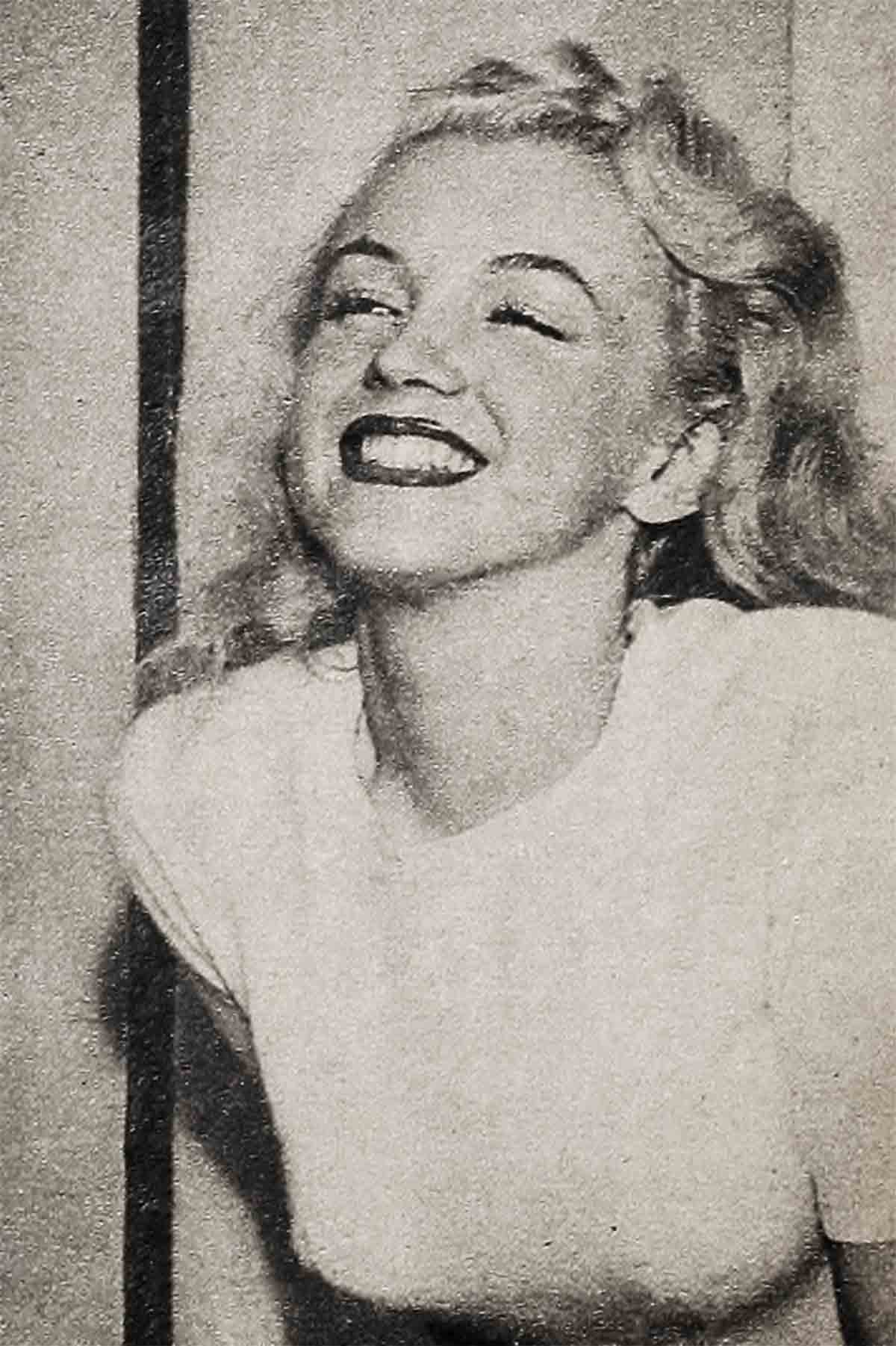
In 1946, however, Marilyn and I decided to do the best with what she had. Her two great photogenic virtues back then were her “cutie” figure and her face.
The photographers liked her. When they got an order from an advertising agency, they tried to work Marilyn into the pictures at twenty-five dollars a day.
Some of her first pictures with me were taken on location. Her hair was so frizzy that the photographer covered it with a bathing cap. The bathing suit pictures were sold to some Canadian magazines.
Marilyn’s first cover was sold to Family Circle. For this cover, Marilyn was posed in a pinafore holding a little lamb. Practically nothing of her figure was shown.
I also got her photographic jobs posing as an airline hostess and an airline passenger. The Douglas Aircraft people thought she was just fine. At this time Marilyn was working under the names of Norma Jean, Jean Norman, and Jean Dougherty.
Her husband had gone back overseas, and several men were trying to date her. But Marilyn wouldn’t go out with any of them. Many of my other girls whose husbands were overseas dated several nights in the week. But not Marilyn.
When photographers offered to drive her home after a sitting, she’d hold up her key ring, jingle it, and say cutely, “I’ve got my own transportation.” By that time she’d earned enough money to buy a jalopy.
But I still couldn’t get her to bleach her hair and have it straightened. Marilyn knew that once she started the process she would have to keep it up, and she wondered where the money would come from.
“Look, darling,” I told her, “if you really intend to go places in this business, you’ve just got to bleach and straighten your hair, because now your face is a little too round and a hair job will lengthen it. Don’t worry about money. I’ll keep you working.”
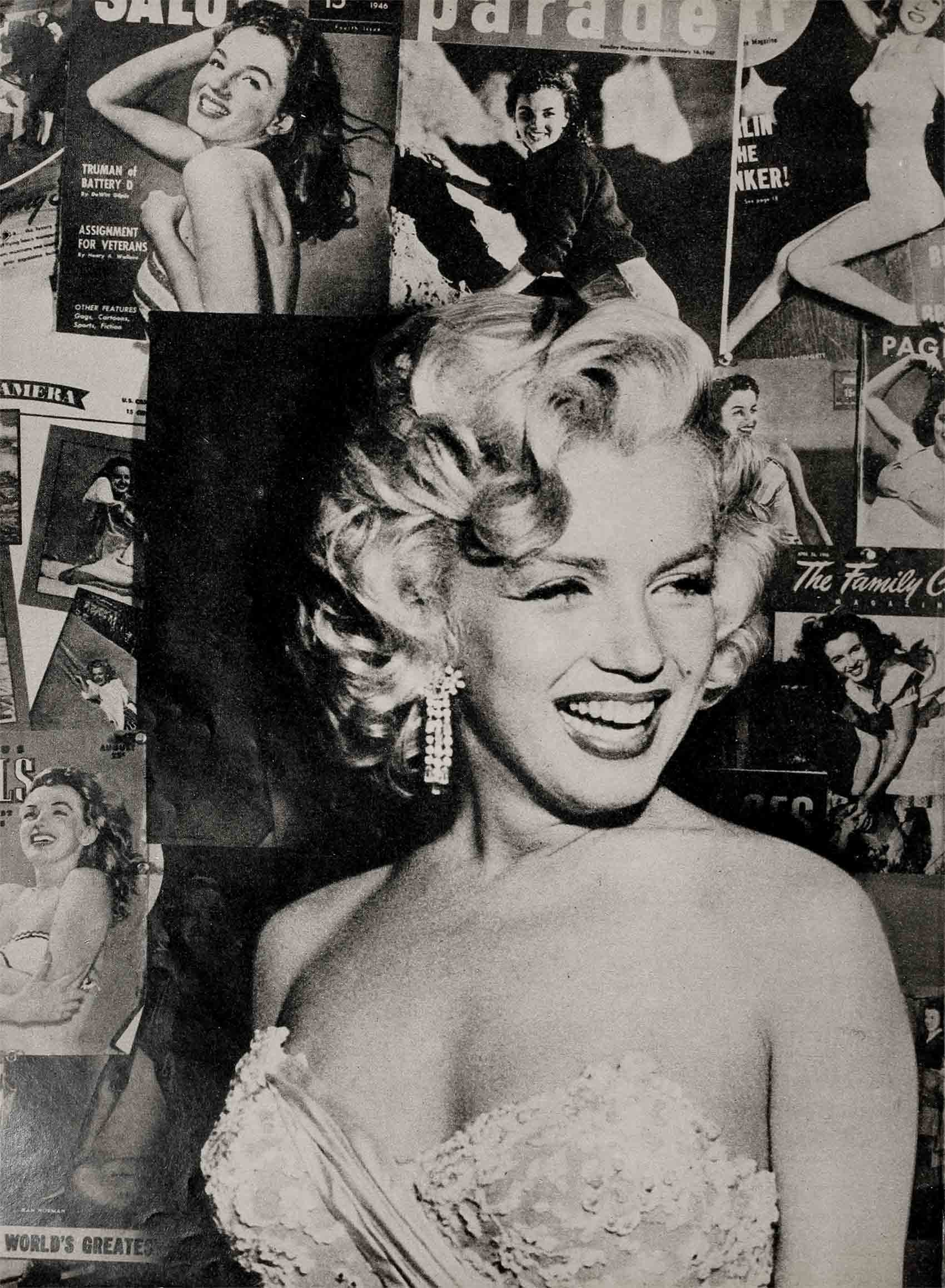
A few weeks later a photographer named Raphael Wolff got an order for a shampoo ad. He hired Marilyn with the understanding that she would do something about her hair. “I’ll pay for everything,” he said.
Marilyn was a stickler for naturalness and was still against any change in her hair styling. But she finally gave in when we all explained that blondes were more in demand photographically because they could be photographed light, medium or dark, depending upon the amount of light directed on them, whereas Marilyn’s hair always photographed more dark than light.
We sent Marilyn to Hollywood hair stylists Frank and Joseph who did their best. First a straight permanent to make the hair more manageable, then a regular permanent at the ends after shaping. Then the hair was bleached and Marilyn emerged the golden blonde you know today.
From this point, she went into her bathing suit stage, and the demand for her was simply terrific. She averaged, I should say, $150 a week, and men began talking to her about going into “the motion picture game.”
One afternoon I got a phone call from the Howard Hughes office. Hughes at the time was recovering from a plane crash. He wanted to know the name of the cover girl on Laff magazine. I told him and then called the columnists and told them to announce that Howard Hughes was on the road to complete recovery. He had his weather eye open again.
She asked if she should accept any of the offers concerning movie tests, and I said, “Before you do any movie work, I’m going to see that you get an agent who really knows the business.” I sent Marilyn to Helen Ainsworth, a fine agent, and on my recommendation Helen signed her.
Helen sent her out to read at 20th Century-Fox. A color test was shot of Marilyn on the set of Mother Wore Tights. Darryl Zanuck looked at it and said, “This girl may have possibilities. Let’s sign her.”
She was signed the next day at seventy-five dollars a week. That’s the true story of how Marilyn Monroe got into motion pictures. All those rumors that producers fell in love with her, that Johnny Hyde of the William Morris office greased her way, and all the other ridiculous rumors about how she got her start are simply not true.
It was her photographic modeling that brought Marilyn know-how, attention and a screen contract. Unlike several other girls I know, the screen contract did not go to her head. She was the same sweet, unassuming girl she had always been.
She posed for calendar art and sometimes calendars take a long time to get published. Four Earl Moran photographs of Marilyn are appearing on the 1954 Brown and Bigelow calendars. These were shot years ago.
Marilyn divorced her husband. She went to Las Vegas to see someone she referred to as “auntie” and stayed six weeks. When she came back. she had her freedom.
It was only after that-period that she began’ going around with Johnny Hyde. Marilyn has led a scrupulous life. She has made her own breaks without benefit of powerful relatives or friends.
She has always believed in work, believed so much, in fact, that unwittingly she antagonized ‘several of the more jealous girls who were in studio classes with her. They just couldn’t believe that any beginner was willing to work as hard as Marilyn did in order to get ahead.
Marilyn did everything.she was told to do at the studio. She devoured every crumb of instruction. Usually late to most functions, she was the first to attend classes and the last to leave.
Studio photographers did wade with Marilyn’s nose. When publicity stills first came out on my ex-student, I was sure that a little plastic surgery had been done on her nose. It seemed to photograph smaller than it used to.
Photographers who had shot Marilyn said the same thing. Their photographs of her in 1945 had been rejected by magazines. because “Marilyn’s nose was too large and her smile too high.” By smiling too deeply, Marilyn was accentuating the lines around her nose, thus highlighting what was not a very good nose—too broad and too curvy.
I’ve made many inquiries, and the truth is that Marilyn still has the nose she was born with. She’s not happy with it and has talked from time to time about altering it. But as yet she’s done nothing about it.
Cameramen at the studio say it gives them no trouble since Marilyn has learned how to bring her smile down and concentrate on her lower lip. I’m glad she’s mastered this trick because I was the first one who suggested she do exactly that.
Nowadays when Marilyn poses for photographers the accent is usually on her figure, not her nose. “But it wouldn’t surprise me if she submitted to plastic surgery.
By nature Marilyn is a perfectionist, an open-minded learner. I think that accounts for the improvement in her wardrobe. It used to be charged that Marilyn had no taste in clothes, that she was overdressed. It was true and the reason was that she had so few clothes to begin with. As soon as she got a little money she indulged herself, bought frilly dresses with yards and yards ‘of pleated material.
It’s certainly understandable. The boy who’s never had enough ice ¢ream buys too much when he can afford it.
Students who know that Marilyn Monroe is my prize graduate occasionally ask me if there is any possibility of their “getting the same breaks Marilyn Monroe got.”
My answer to that one is, “What breaks?”
Marilyn Monroe, I tell them, is a self-made success. Of course, she’s endowed with charm, personality and a provocative figure, but thousands of girls are similarly endowed. What most of them lack Marilyn has in spades—persistence and fortitude.
These are two requisites for any person who wants to crash Hollywood. This is no town for the weak, the weary or the easily-defeated.
THE END
—BY EMMELINE SNIVELY
(Marilyn Monroe can now be seen in 20th Century-Fox’s River of No Return.)
It is a quote. MODERN SCREEN MAGAZINE JULY 1954


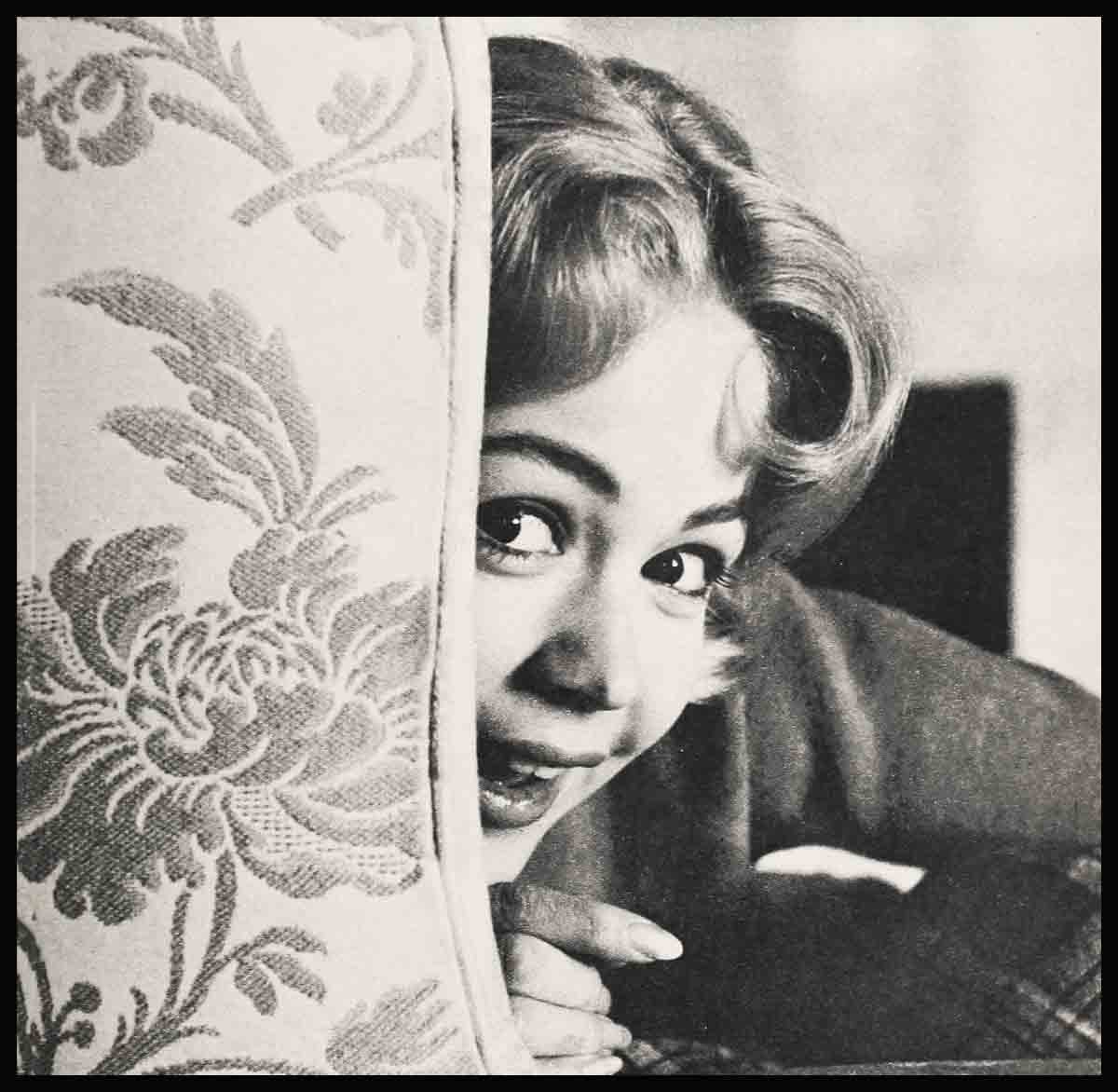
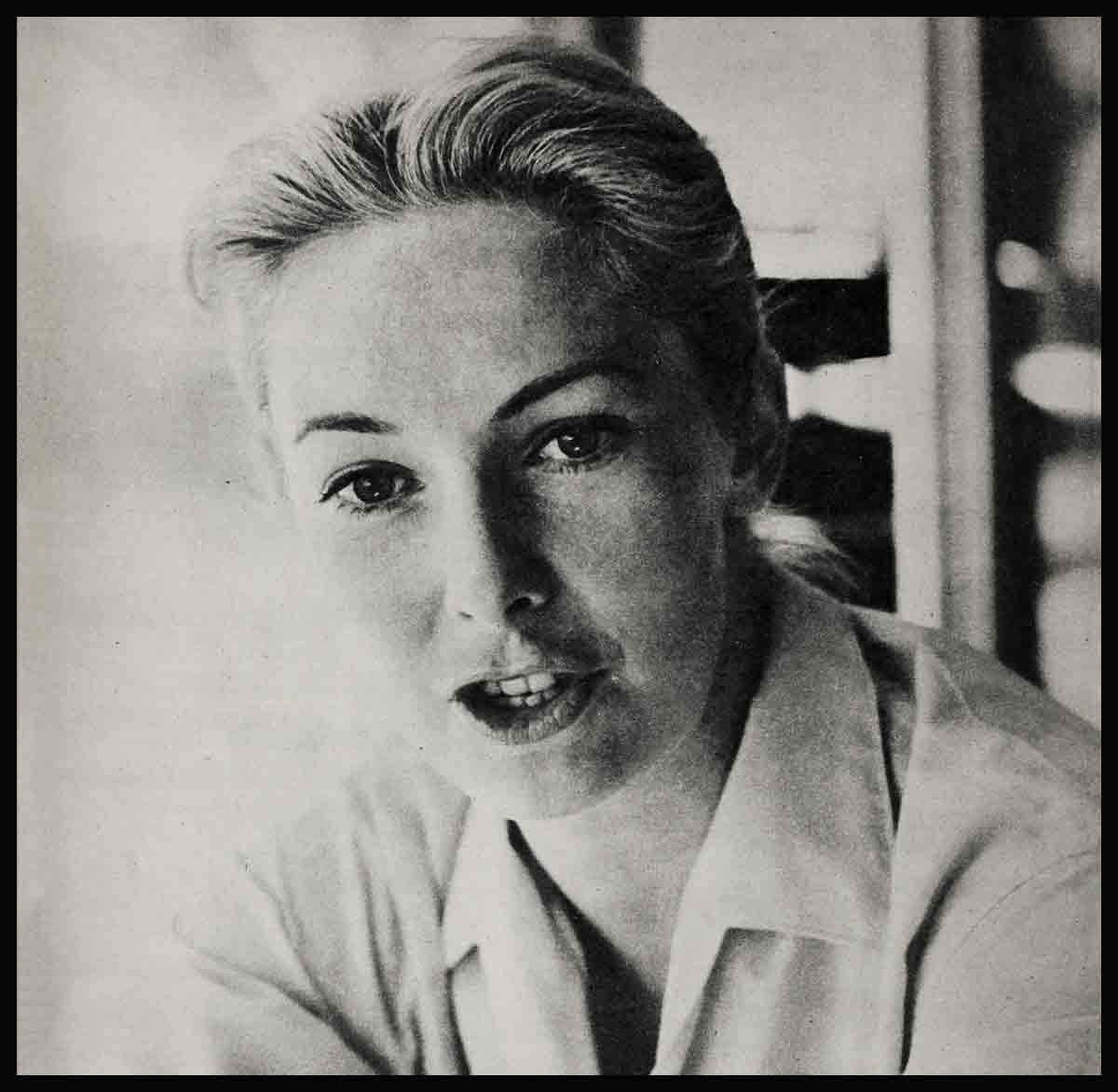

No Comments